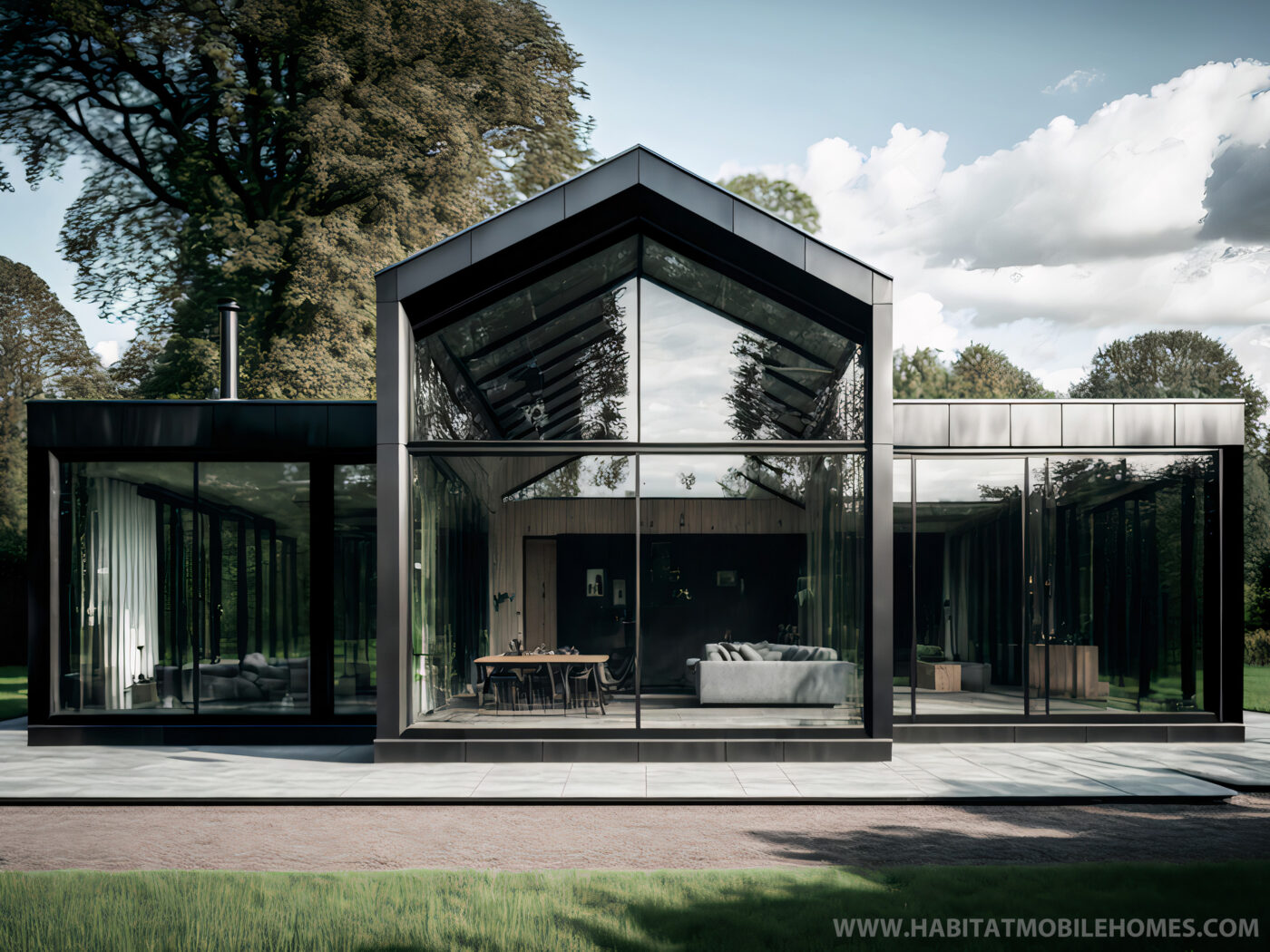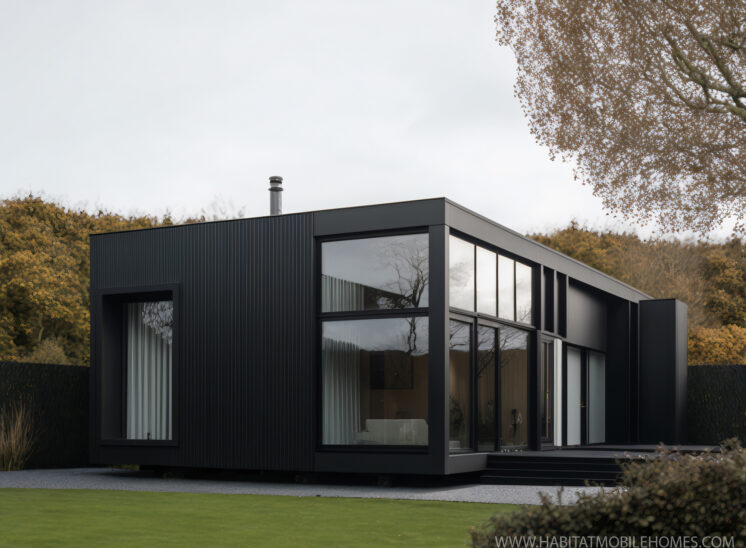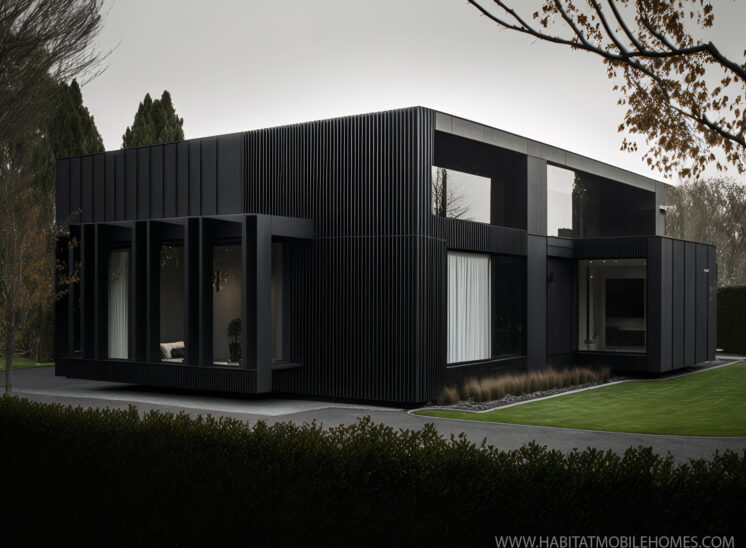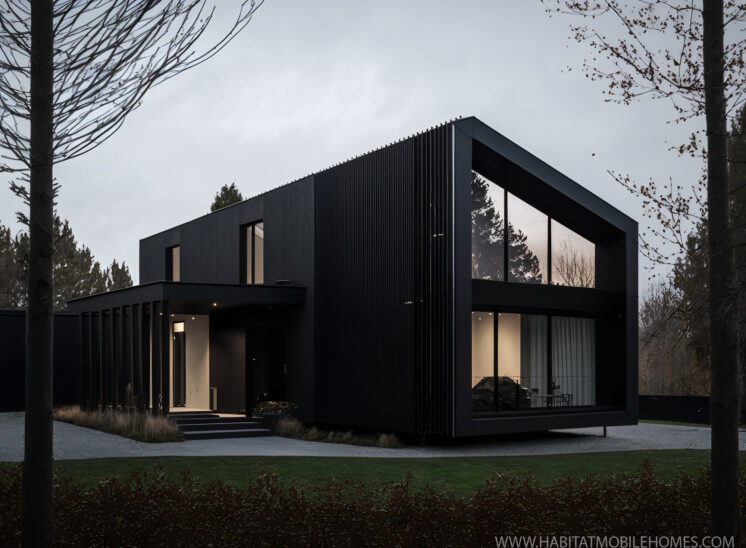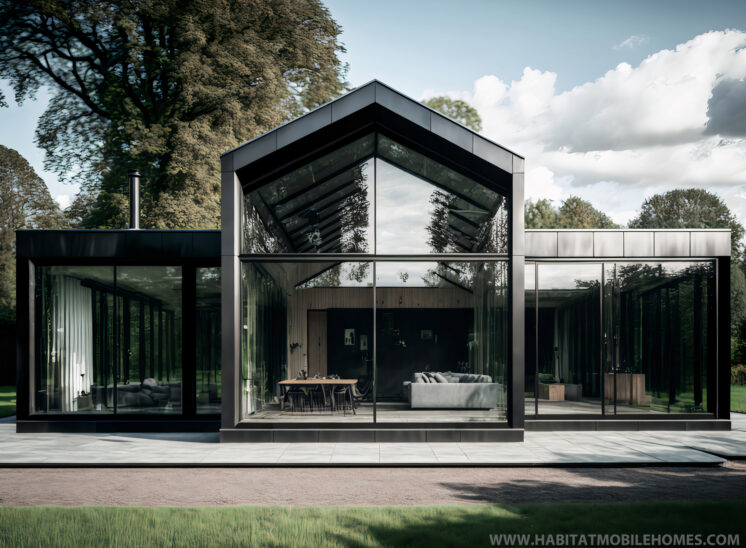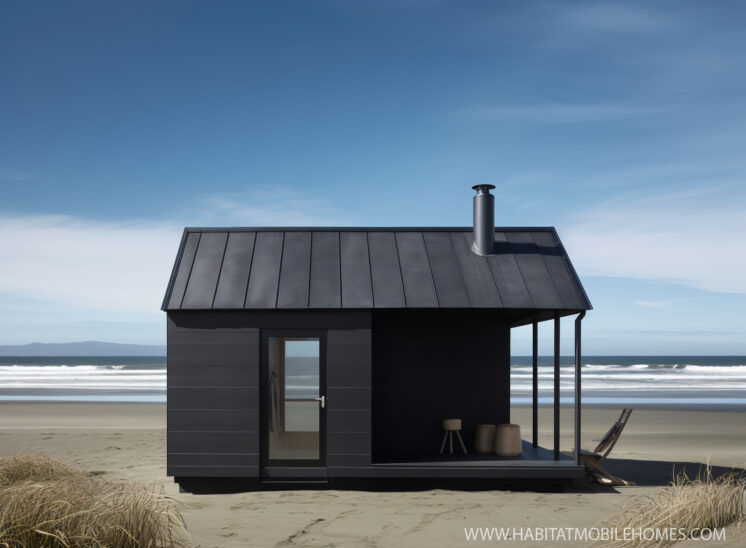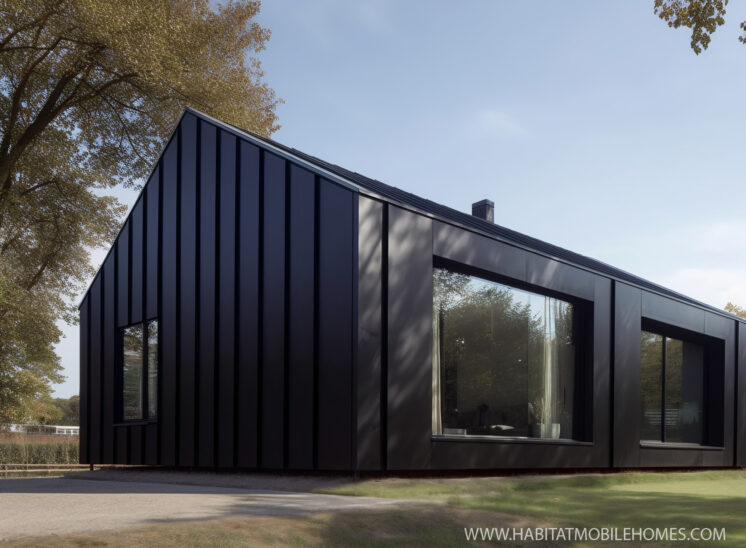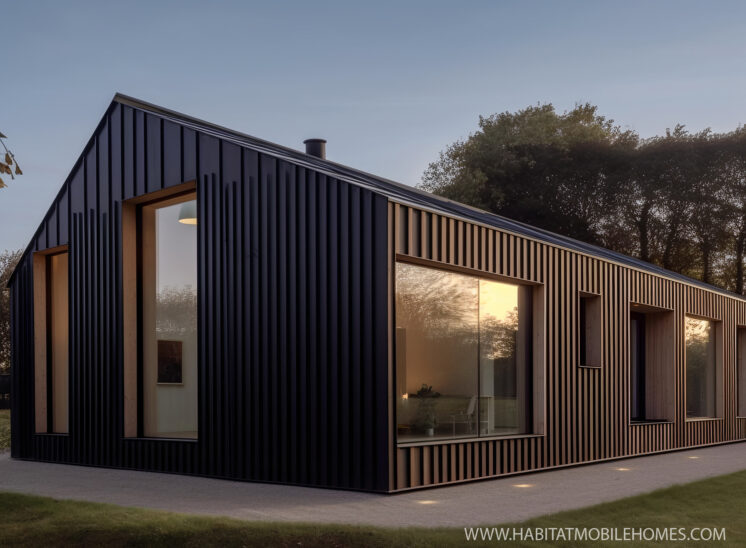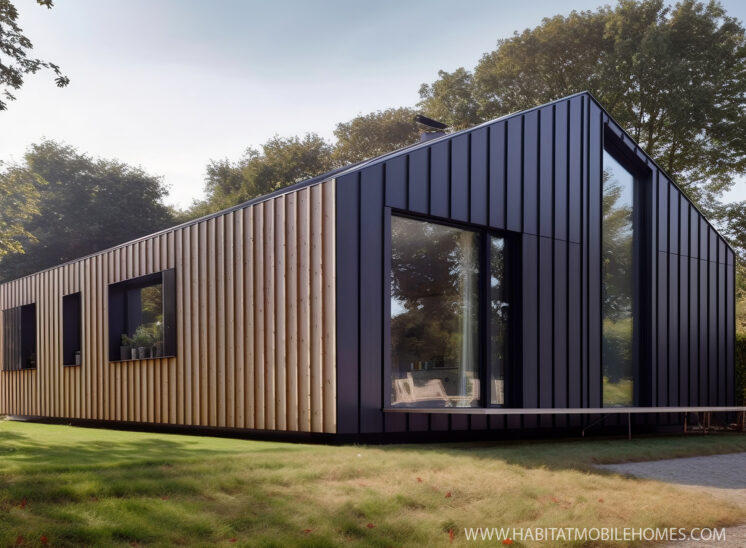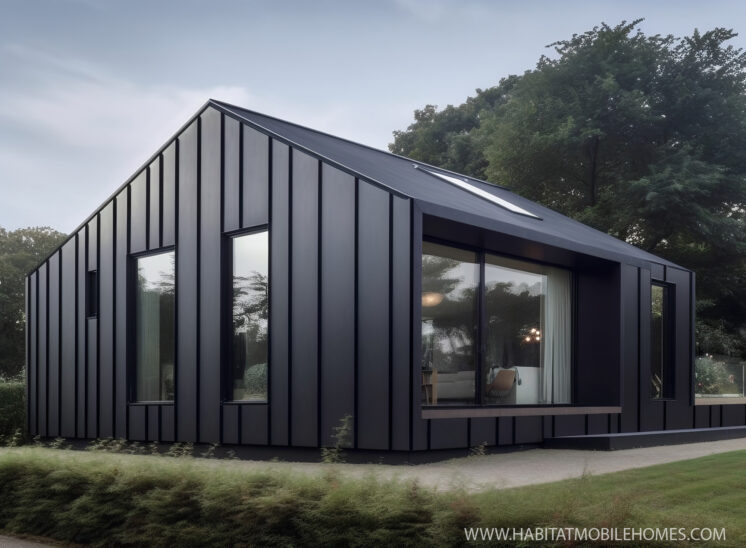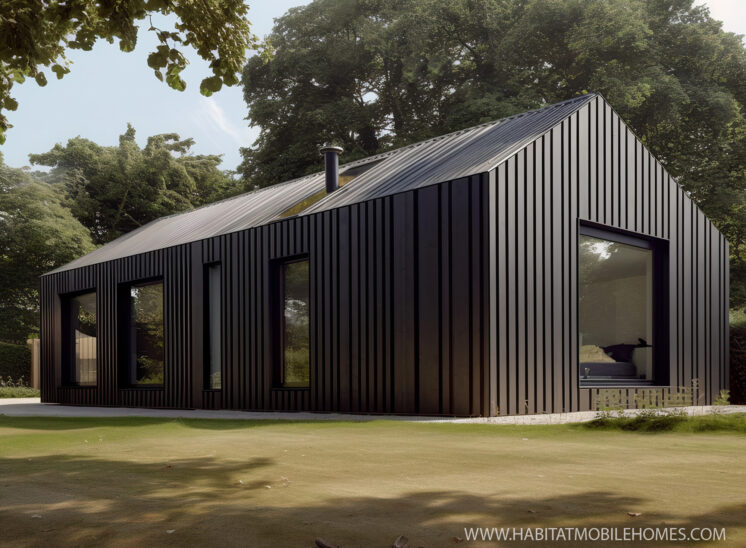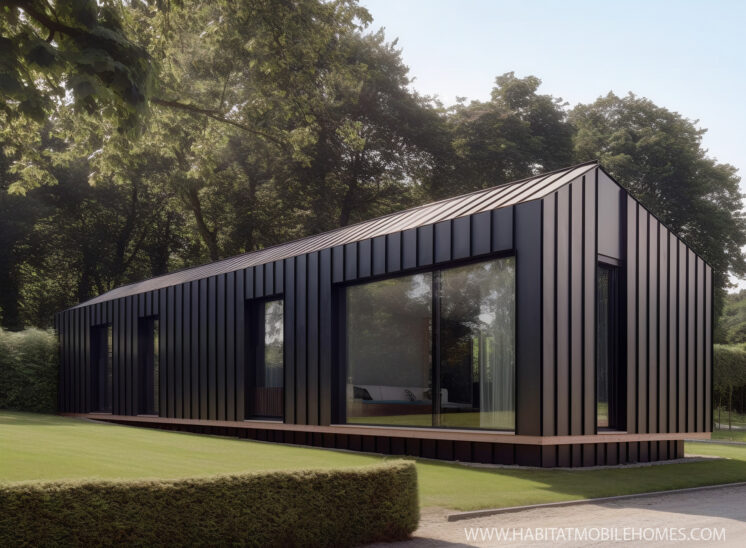Check out our latest designs featuring minimalist modern style with sheet metal cladding!
Are you in search of the newest trends in mobile home design? Look no further! We are excited to present our newest collection of concepts and designs that will change the way you think about mobile homes. Our team has put in countless hours of hard work to come up with creative solutions that combine aesthetics with functionality, giving homeowners the best of both worlds. With our designs, you can make the most of your space without compromising on style.
Mobile homes and static caravans are a popular choice for many homeowners in the UK, offering a cost-effective way to expand living space and provide a flexible accommodation option. However, there are rules and regulations surrounding the use of caravans on private property. Here are the three main factors to consider when using a mobile home or static caravan in your garden.
Location
One of the primary considerations when siting a caravan in your garden is the location. The caravan must be within the "curtilage" of a dwelling house, which refers to the garden or driveway, and not on adjoining paddock land or other surrounding areas.
In the case of James v Secretary of State for the Environment 1990, it was held that the location of the caravan must be determined by physical layout, ownership (past and present), and use or function (past and present) of the land.
Definition of a "Caravan"
To be eligible for siting in a garden, the caravan itself must conform to the legal definition of a "caravan" outlined in the Caravan Sites and Control of Development Acts 1960 and Associated Articles. According to the Appeal Decision by the Secretary of State (Erewash Borough Council 2002), there are three tests to determine whether a structure is considered a caravan:
Construction test
Mobility test
Size test
Use
The final factor to consider is the use of the caravan. The use must be incidental to the main house, meaning it is used in conjunction with the house by members of the household, family, or guests. According to Hansard, the official record of proceedings in the UK Parliament, there are four accepted "incidental" tests:
The relationship between the respective occupants
The relative size of the house, its garden, and the caravan
The relative scale of accommodation in the caravan and the house
The degree to which the caravan is functionally connected to and subordinate to the use of the dwelling house
Examples of using a mobile home or static caravan in your garden may include using it as a home office, guest house, or additional living space. As long as the caravan complies with the legal definition, is located within the curtilage of the dwelling house, and is used incidental to the main house, it may not require planning permission.
In conclusion, using a mobile home or static caravan in your garden can be a cost-effective and flexible accommodation option. However, it is essential to understand and comply with the rules and regulations surrounding their use on private property to avoid any legal issues in the future.
Tiny Homes in the Garden: A Guide to Living the Miniature Life
Who says big is always better? With the rise of tiny homes and the minimalistic lifestyle, more and more people are turning to alternative living arrangements, including mobile homes and static caravans. And the best part? You can have one right in your own backyard!
But before you start planning your tiny garden abode, there are a few rules to follow. Don't worry, they're not too complicated. Here's what you need to know:
Location, location, location! Your caravan must be situated in your garden and not on any surrounding land or paddock.
Your caravan should be incidental to the main house, meaning it's used as an extension of your home by family members, guests, or yourself.
Your caravan must meet the legal definition of a caravan.
Now that you know the rules, it's time to get creative! Imagine waking up to the smell of fresh air and nature every morning, with your tiny home just steps away. You can have your own little oasis, complete with a cozy bed, a small kitchen, and a comfy living space.
Need inspiration? Check out some of the most amazing tiny homes from around the world! There's the "Hobbit House" in Wales, the "Ark Shelter" in France, and the "Greenmoxie Tiny House" in Canada, just to name a few.
But why stop at just living in a tiny home? You can take it to the next level with a tiny garden too! Imagine a mini vegetable garden, a tiny herb garden, or even a tiny pond. The possibilities are endless!
So what are you waiting for? Join the tiny home revolution and start living life to the fullest, in a tiny and cozy space all your own.
Are you interested in having a mobile home or static caravan in your garden in the UK? Well, there are some rules that you need to know about first.
Rule number one: your caravan needs to be in your actual garden, not on any surrounding land or paddock.
Rule number two: your caravan should be used in an incidental manner to the main house by members of the household, family, or guests.
Rule number three: your caravan must comply with the legal definition of a caravan.
So, what is the legal definition of a caravan? It must conform to the Caravan Sites and Control of Development Acts 1960 and Associated Articles.
In order to determine if your caravan fits the legal definition, there are three tests that need to be applied. These tests are known as the construction test, mobility test, and size test.
Lastly, the use of the caravan must be incidental to the use of the house. This means that it must be used in conjunction with the house. There are four accepted tests for incidental use, which include the relationship between occupants, the relative size of the house, garden, and caravan, the relative scale of accommodation in the caravan and house, and the degree to which the caravan is functionally connected to and subordinate to the use of the dwelling house.
By following these rules, you can enjoy having a mobile home or static caravan in your garden without having to worry about planning permission.
A Beginner's Guide to UK Laws on Mobile Homes and Caravans in Gardens
If you're looking to add a mobile home or static caravan to your garden in the UK, it's important to understand the rules and regulations around this. Here's a beginner's guide to help you get started.
Location
First and foremost, it's crucial to ensure that the mobile home or caravan is located within the "curtilage" of your dwelling house. This basically means that it needs to be situated in your garden or on your drive, and not on surrounding land or a paddock.
Definition of a "Caravan"
To comply with UK laws, the structure of the mobile home or caravan must meet the legal definition of a "caravan," as outlined in the Caravan Sites and Control of Development Acts 1960 and Associated Articles. This definition includes requirements around size, mobility, and construction.
Use
The use of the mobile home or caravan must be incidental to the use of your dwelling house, which means that it must be used in conjunction with the main house by members of the household, family, or guests. To ensure compliance with UK laws, there are four accepted "incidental" tests that need to be met:
- The relationship between the respective occupants.
The relative size of the house, its garden, and the caravan.
The relative scale of accommodation in the caravan and the house.
The degree to which the caravan is functionally connected to and subordinate to the use of the dwelling house.
By following these rules and regulations, you can add a mobile home or static caravan to your garden in the UK without needing to obtain planning permission. However, it's important to note that there may be additional requirements or restrictions based on your specific location or circumstances, so be sure to do your research and consult with local authorities as needed.

